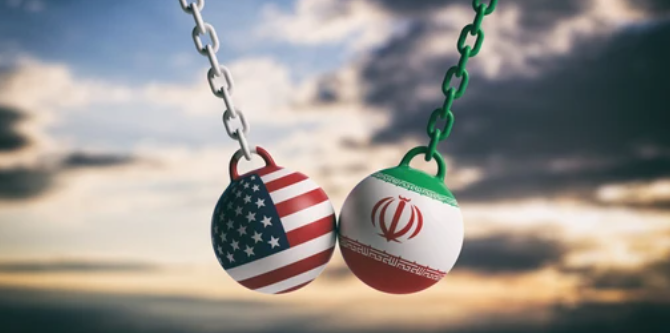Understanding the Heightened Threat Posed by Iran
Recent alerts from US authorities have brought attention to Iran’s growing threat. This occurs at a time when tensions between the two countries are still high due to worries over Iran’s nuclear program, support for extremist organizations in the Middle East, and development of ballistic missiles.
The Nature of the Threat
Although the threat’s precise details are yet unknown, officials have suggested a number of possibilities:
Military Action
Iran’s potential to directly target American interests in the area, such as military installations or troops, is a source of worry. This may entail cyberattacks, drone attacks, or missile strikes.
Proxy Attacks
Iran has a track record of endorsing terrorist organizations such as Hamas and Hezbollah. Authorities worry that these organizations might be utilized to launch assaults against US partners in the Middle East or on US territory.
Assassinations
There are concerns that Iran may try to kill US officials, living or dead, or even American citizens who are seen as potential threats.
Intelligence Gathering
These warnings are based on a combination of intelligence sources, including:
Human Intelligence
Infiltration of Iranian networks by undercover agents can provide valuable insights into potential plots and planning stages.
Signals Intelligence
Interception of Iranian communications, both electronic and human, can reveal clues about potential attacks.
Imagery Intelligence
Satellite and drone footage can help monitor Iranian military activity and identify potential staging grounds for attacks.
Open Source Intelligence
Publicly available information, such as social media posts or news reports, can sometimes offer clues about Iranian intentions.
US Response
The US is taking several steps to address the perceived threat:
Increased Military Presence
The US has bolstered its military presence in the Middle East, sending additional troops and equipment to the region. This serves as a deterrent to Iranian aggression and allows for a quicker response to any potential attacks.
Diplomatic Efforts
American continues to pursue diplomatic channels to de-escalate tensions with Iran. This could involve reviving the Iran nuclear deal or finding common ground on other critical issues.
Intelligence Sharing
America is working closely with its allies to share intelligence about the Iranian threat. This collaboration helps to present a united front and allows for a more coordinated response.
Domestic Counterterrorism Measures
American law enforcement and intelligence agencies are on heightened alert for any signs of Iranian-backed activity within the country. This includes increased surveillance and monitoring of potential threats.
Potential for Escalation
The situation remains volatile, and there is a risk of escalation if either side miscalculates the other’s intentions. Here are some potential scenarios:
Miscalculation
An accidental military encounter or a misunderstanding of intentions could lead to a larger conflict.
Proxy War
An attack by an Iranian-backed proxy group on a American ally could draw the US into a direct confrontation with Iran.
Cyberwarfare
A cyberattack by Iran on critical US infrastructure could trigger a strong US response, potentially escalating into a broader cyberwar.
The Path Forward
America and Iran face a critical juncture. De-escalating tensions requires a multi-pronged approach:
Diplomacy
A return to serious diplomatic negotiations is crucial. Both sides need to find a way to address each other’s core concerns and build trust.
Transparency
Greater transparency from Iran regarding its nuclear program and ballistic missile development would help to alleviate US concerns.
Addressing Underlying Issues
Resolving the underlying issues that fuel tensions, such as Iran’s support for militant groups, needs to be part of the long-term solution.
The coming weeks and months will be crucial in determining whether the America and Iran can navigate this period of heightened threat or if the situation escalates further.
